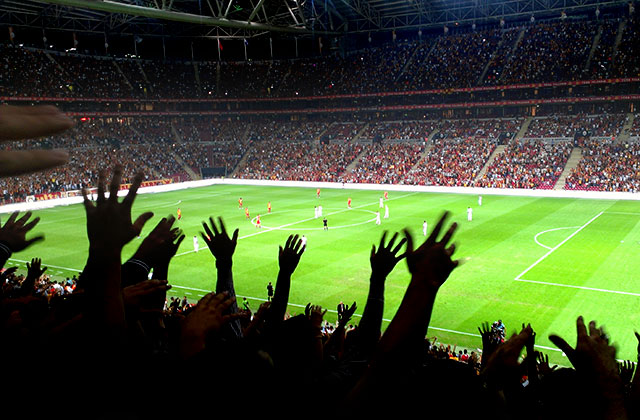Goal-line technology is finally here then with the recent announcement by FIFA that GoalControl GmbH (GCG) will be the official provider for the Confederations Cup in Brazil in two months time, the teams competing in the tournament incidentally being Brazil, Italy, Japan, Mexico, Nigeria, Spain, Tahiti (no, seriously) and Uruguay.
German company GCG winning the tender ahead of three other companies in Hawk-Eye, GoalRef and CAIROS. So, with GCG defeating English company Hawk-Eye it’s slightly ironic that FIFA President Sepp Blatter began pushing for goal-line technology following Frank Lampard’s ‘no goal’ against Germany in the 2010 World Cup. Hawk-Eye taking the decision in typical English good grace however with a statement that read: "Sport teaches us many lessons, including accepting defeat graciously and having confidence in your ability to bounce back strongly. Hawk-Eye wishes FIFA and the appointed GLT supplier every success."
How does it all work then? Well, the GCG system uses 14 different cameras, with seven per goalmouth, situated high around the stadium. All the objects within the camera range are tracked, with players, referees and any other objects filtered out by the computer system, while the ball’s position is continuously and automatically captured in three dimensions when it is close to the goal. Which could be numerous times in Tahiti’s case.
With everything else filtered out then and the ball tracked by seven cameras its exact position can be judged within a few millimetres. If the ball has crossed the goal-line then the system sends an encrypted radio signal and vibration to the referee’s watch in less than one second, while after that a virtual 3D image from any angle of the incident can be shown on a big screen at the stadium.
Sounds pretty perfect then doesn’t it really with FIFA’s thoughts on their website about choosing GCG being: “While all four companies had previously met the stringent technical requirements of the FIFA Quality Programme, the final decision was based on criteria relating more specifically to the tournaments in Brazil, including the company’s ability to adapt to local conditions and the compatibility of each GLT system in relation to FIFA match operations. The respective bids were also judged on cost and project management factors such as staffing and time schedules for installation.”
The use of GCG in the two week tournament in Brazil meanwhile is subject to a final installation test at each stadium where the system will be installed, with those tests being carried out independently, while before kick-off in every game match officials will also carry out their own tests, something they did when the system was first used as a trial run during the Club World Cup in Japan last December.
Where else can goal-line technology be used then? Well, for a start UEFA President Michel Platini doesn’t fancy the idea in the slightest as he commented to the BBC: "I prefer to put more money into youth football and infrastructure than spend it on technology when there's a goal in a blue moon that hasn't been seen by a referee. It would cost around 54 million euros (£46m) over five years for this technology, so it's quite expensive for the sort of mistake which happens once every 40 years. In the Champions League, I'm very happy with the results (of a five-man team). Practically no mistakes have been made and the referees see practically everything that happens on the pitch."
Sadly for Platini though his financial argument doesn’t stack up at all given that he bemoans a cost of around 11 million euros per year when the Champions League prize fund is up at around 800 million euros per year, Chelsea for example last season banking £49 million for winning the competition, while Manchester United pocketed £28 million despite being knocked out in the group stages.
There are plenty of spare pennies to be had then if monies are shifted around just a fraction in the Champions League, but closer to home the FA seem a lot keener and it could be used in the FA Cup next season with the matter set to go before the FA Cup committee after getting the green light from the International Football Association Board at a recent meeting in Edinburgh.
